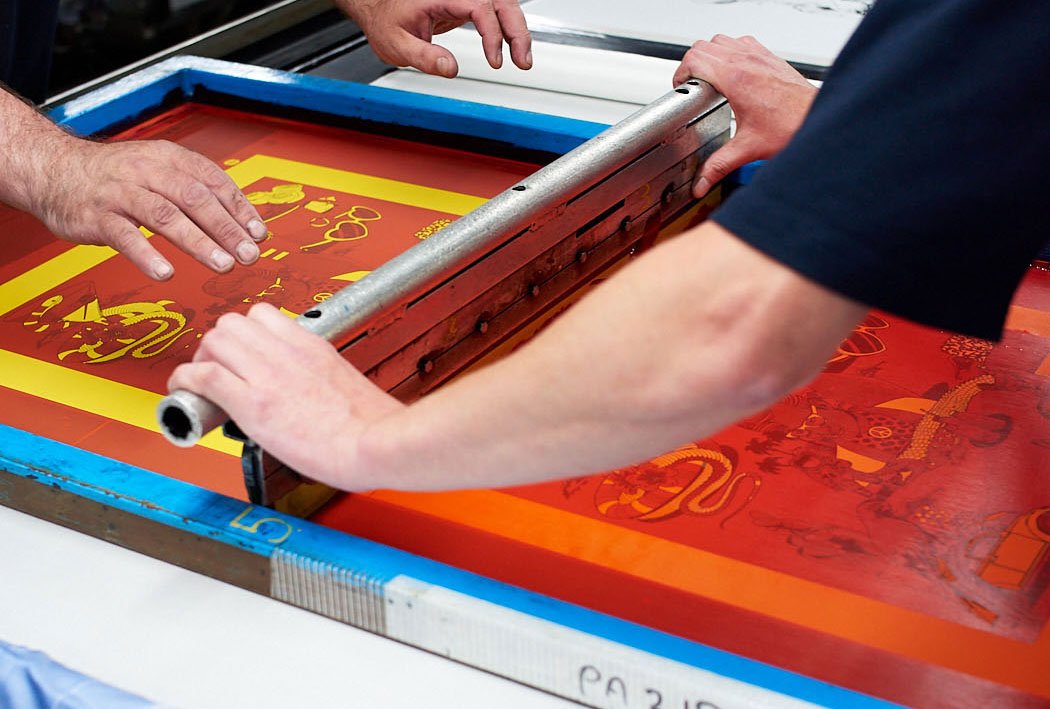The screen-printing technique has been used for ages. It is a centuries-old printing method that is still used for creating amazing designs. The designs created by the screen-printing method are widely popular due to the durability of the print.
Moreover, the designs created by this technique are capable to produce vivid colors, even on dark fabrics. Therefore, this printing method is still popular in the printing industry.
The screen-printing technique is the process in which ink is pressed and passed through the stenciled mesh to create an alluring design.
The screen-printing technique is not just for fabric, but it can also be applied on plastic, wood, metal, and glass. The screen-printing technique is further categorized into six different types.
1. Spot Color Screen Printing
In the Spot Color Screen Printing method, the spot colors are pulled by using the color separation software program. These spot colors are further utilized to print solid colors and shapes. While using the Spot Color Screen Printing method, you have to be ready with the design and complete set for printing.
Also, it is important to ensure that the design is up to date for print and the different colors are properly separated. If the colors of the design are not visually distinct, then the final print on the substrate will not be up to the mark.
Therefore, it is very important to check for proper separation of colors which is visible. No matter what kind of screen-printed design you want, we recommend you hire professionals like screen printing Vancouver contractors.
2. Halftone Printing
It is a type of screen-printing technique that mainly emphasizes the use of shading followed by small dots. This screen-printing technique is perfect for printing pictures, especially those that only have one color.
Halftone Printing looks good only when the printed ink color is dark as compared to the background. In the entire process, only one color is required which is half-toned. The Halftone screen printing is amazing when looked at from a distant location. People have the illusion of multiple colors when they see the picture from far.
Always keep in mind that the image should be ready for print. If an image is faulty, then dots will not be printed. The low-resolution image will not look good when the image is not appropriate.
Therefore, you should ensure that resolution of the image is high. In addition to this, the halftone screen printing technique needs a high-mesh count screen printing method for a desirable result.
3. Grayscale Printing
In this type of Screen-Printing technique shades of gray are used ranging from white to black. The screen printers catch the different shades in this technique by increasing or reflecting white light and by absorbing black light.
You should ensure that the design is of high resolution and after that convert it into the grayscale. Gray shades fall between zero-bright to all bright. Every shade in the grayscale image falls inside the bracket based on the brightness level of every pixel.
4. CMYK (4-Color Printing)
The CMYK Screen Printing technique contains four basic colors- yellow, black, cyan, and magenta. If you are searching for printing techniques that help you to create alluring printing designs at an affordable price, then CMYK works well.
The most important stage in this printing process is the coinciding of four colors with a black plate. The t shirt printing Calgary professionals are experts in this printing technique.
5. Simulated Process Printing
When it comes to screen printing, there are multiple ways to create alluring designs. You can create any printing design with the help of the simulated process screen printing method.
You can print your creation, pictures, any specific phrase, etc. Nowadays, the simulated screen-printing technique is a widely popular printing method. This printing method is popular for photo prints on fabrics or any other substrate.
The screen-printing technique pays attention to the use of halftone ink colors so that they can imitate the colors on the original design. This screen-printing technique is also known as the sim process. It is useful for both large and dark material colors.
In this technique, they will identify the colors on the design and print them on the substrate. The spot colors of the original designs are used and mixed with halftones and gradients to create attractive visuals.
6. Duotone Printing
It is also one of the types of screen printing in which the combination of two halftones for that one image is printed by using two colors. In simple terms, the black halftones will be used to print the design in black and the second halftone printed by using any other color.
When the black halftone is integrated with the warm brown halftone, then a duotone print will be formed. The duotone print is just like the sepia tone prints in the photography.







